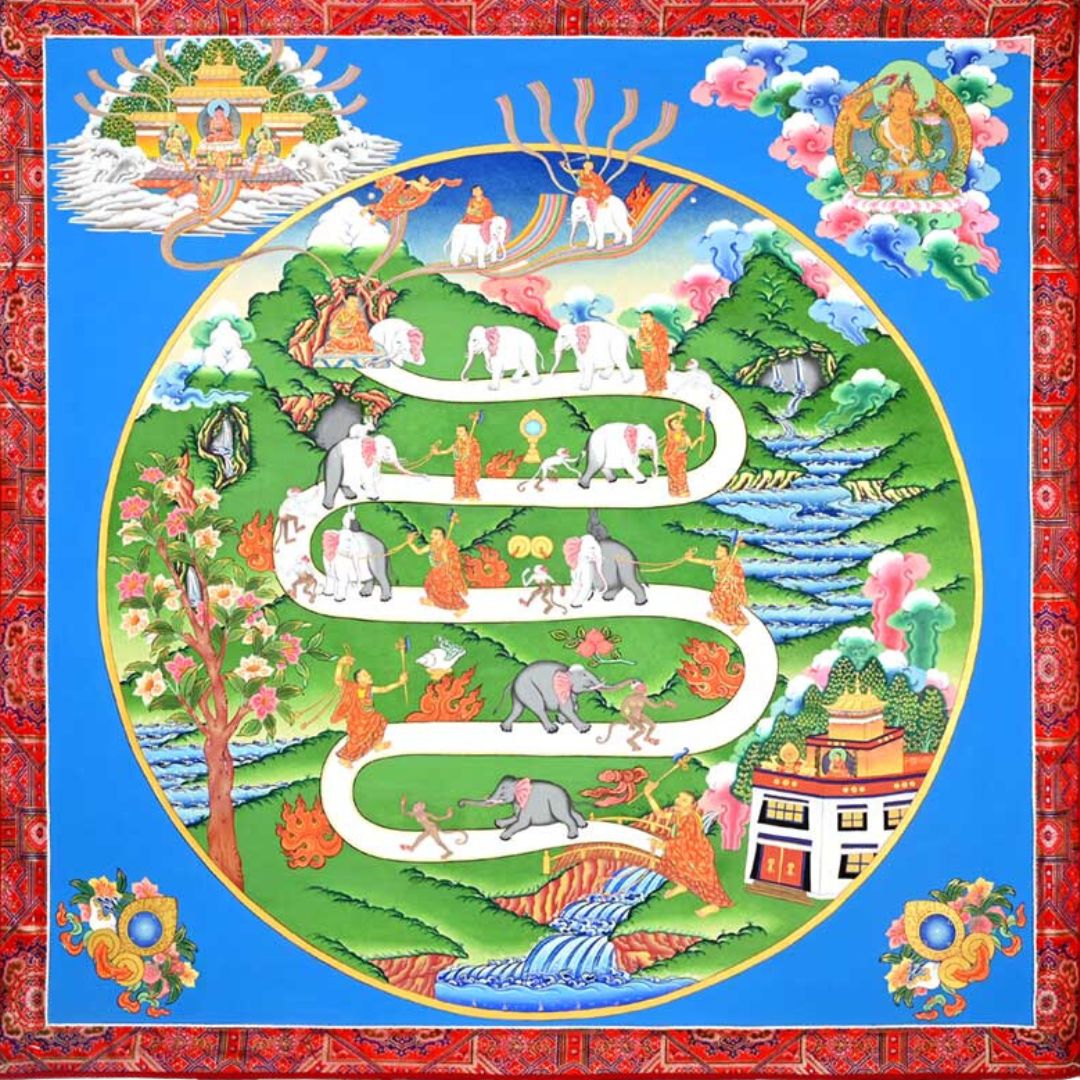In 2021, to mark the retirement of longtime director Bonnie Speed, the Carlos Museum commissioned two thangka paintings from the Norbulingka Institute in Dharamsala, India—one of the bhavacakra or “wheel of becoming,” and the other, the śamatha or “calm-abiding.”
According to Buddhist narratives, the image of the bhavacakra is said to have been conceived of by the Buddha himself. The image is frequently painted on the exterior walls of Tibetan Buddhist temples as a means for monastics to teach the laity about karma and the cyclic conception of existence known as samsara.
Often paired with the bhavacakra in Buddhist teaching, the śamatha represents the practice of “taming the mind” through focused meditation.
Click on the buttons below to explore the thangka paintings in detail.
CuriosiTEA: Conserving the Thangka Paintings
In 2021, the Carlos Museum commissioned two thangka paintings from the Norbulingka Institute in Dharamsala, India, one of the bhavacakra, or the “wheel of becoming,” and the other, the samatha, or the “nine steps of the calming of the mind.” Unfortunately, the paintings were severely damaged in shipping from India to Atlanta.
In the CuriosiTEA program recording below, master Tibetan artist Buchang Nugbya and Andrew W. Mellon Fellow in Conservation, Ella Andrews, discuss their collaborative efforts to repair the two paintings. Translations provided by Tsondue Samphel.This program was presented as part of Tibet Week 2023.






